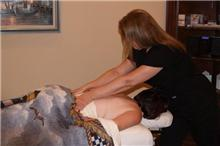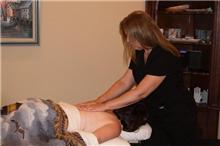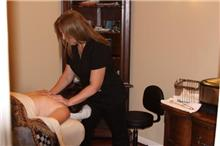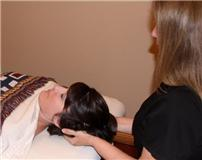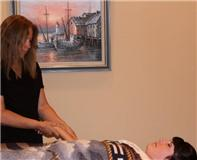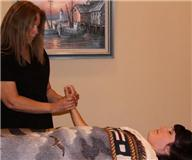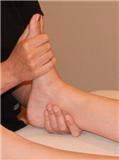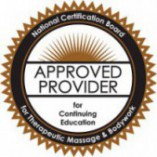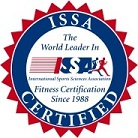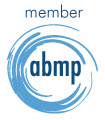FAQs
Must I be completely undressed?
Will the practitioner be present when I disrobe?
What parts of my body will be massaged?
What will the massage or bodywork feel like?
Are there different kinds of massage and bodywork?
What should I do during the massage or bodywork session?
How will I feel after the massage or bodywork session?
What are the benefits of massage and bodywork? How often should I get a massage? Are there any medical conditions that would make massage or bodywork inadvisable? Are there any medical conditions that would make massage or bodywork inadvisable immediately after being involved in an automobile accident? Are there any instructions prior to or after a massage therapy session?
Where will my massage or bodywork session take place?
Your massage or bodywork session will take place in a warm, comfortable, room with soft music played to help you relax. You will lie on a table especially designed for your comfort.
Must I be completely undressed?
You should always undress to your level of comfort. Most massage and bodywork techniques are traditionally performed with the client unclothed for various reasons:
- a nut based oil will be applied to the skin to allow your muscles to be massaged without causing excessive friction to the skin while helping to hydrate your skin, make sure your therapist knows if you have nut allergies
- the table will be heated for your comfort, inform your therapist of medical conditions or medications which cause a heat intolerance.
- moist hot towels might be applied during your session to aid in the warming of your musculature
- you will be properly draped during the entire session to keep you warm and comfortable. Only the area being treated will be exposed.
Will the practitioner be present when I disrobe?
The practitioner will leave the room while you undress, relax onto the table, and cover yourself with a clean sheet and blanket.
What parts of my body will be massaged?
A typical full-body session will include work on your back, glutes, hips, legs, feet, hands, arms, shoulders, head, and neck.
What will the massage or bodywork feel like?
In a general your session may start with broad, flowing strokes that will help calm your nervous system and relax exterior muscle tension and application of massage oil. As your body becomes relaxed, pressure will gradually be increased to relax specific areas and relieve areas of muscular tension. Massage and bodywork are most effective when your body is not resisting, let your therapist know if you have painful or tender areas as they work, so they can address these issues with another technique to help alleviate this source of discomfort by changing techniques.
Are there different kinds of massage and bodywork?
There are numerous types of massage and bodywork; various techniques utilize different strokes, including basic rubbing strokes, rocking movement, posture and movement re-education, application of pressure to specific points, and more. We can discuss which methods may be most appropriate for you.
What should I do during the massage or bodywork session?
Prior to the massage, feel free to ask the practitioner any questions about the technique or the upcoming session. During the massage, make yourself comfortable. The practitioner will either gently move you or tell you what is needed throughout the session (such as lifting your arm). Many people just close their eyes and completely relax, communicating if/when they need more or less pressure, another blanket, or anything else relevant to the session. If you have any questions regarding the session or about the particular technique you are receiving, feel free to ask.
How will I feel after the massage or bodywork session?
Most people feel very relaxed. Some experience freedom from long-term aches and pains developed from tension or repetitive activity. After an initial period of feeling slowed down, people often experience increased energy, heightened awareness, and greater productivity which can last for days. Since toxins are released from your soft tissues during a massage, it is recommended you drink plenty of water following your massage.
What are the benefits of massage and bodywork?
Massage and bodywork can help release chronic muscular tension and pain, improve circulation, increase joint flexibility, reduce mental and physical fatigue and stress, promote faster healing of injured muscular tissue, improve posture, and reduce blood pressure. Massage and bodywork is also known to promote better sleep, improve concentration, reduce anxiety and create an overall sense of well-being.
How often should I get a massage? How often you should get a massage depends on your needs, your budget and your stress or pain levels. Massage has significant health benefits that are best experienced when you get massage regularly. Typically, once every week or two is ideal for keeping your muscle tissue pliable and in good shape, if you can afford it. If you are in chronic pain or have a special issue to address, you might need to come weekly (or even twice a week) until your musculature shows a physiological change – normal healthy functioning and continue to stretch out your appointment schedule to reach a maintenance level. Normal maintenance once a month – every 4 weeks is probably the minimum for maintaining the health of your tissue. If you start stretching the massages out too far, then your muscles can revert to their old patterns and you’ll have to start all over again to restore their suppleness and pliancy. Listen to your body, but don’t wait too long in an effort to save money. New muscle issues are normally resolved quickly. Older muscle issues take more time to resolve.
Are there any medical conditions that would make massage or bodywork inadvisable?
Yes. That’s why it’s imperative that, before you begin your session, the practitioner asks general health questions. It is very important that you inform the practitioner of any health problems or medications you are taking. If you are under a doctor’s care, it is strongly advised that you receive a written recommendation for massage or bodywork prior to any session. Depending on the condition, approval from your doctor may be required.
Are there any medical conditions that would make massage or bodywork inadvisable immediately after being involved in an automobile accident?
Yes. Even if your injuries are slight or non-existent, immediately following the automobile accident, go see a doctor. Why? You may have injuries and not know it. Frequently, people do not feel pain immediately after an automobile accident. The next day they are stiff and in pain. Pain sometimes takes several days or even weeks to appear. Whiplash injuries may not show any symptoms until later: a few days or a few weeks. Other injuries can include bruising across the chest from the seat belt, or more seriously, internal injuries, which result as vital organs are compressed against the spine or ribs. Remember the shoulder harness portion of the seat belt crosses over the heart, lungs, diaphragm, liver, ribs, sternum, and clavicle, the lap portion of the seat belt crosses over the pelvis and lower spine, intestines, colon and spinal nerves, all of which might be affected, even in low impact crash. Ribs broken by the force of the seat belt, undetected, might splinter and enter lung tissue, penetrate the liver or puncture the kidneys. Without a thorough examination by a Doctor there is no way to know if a person has internal injuries. Administering massage therapy at this point can do more harm than good. A Doctor will be able to diagnose, x-ray, and document your injuries and help you get the treatment that you need: medical treatment, massage therapy, or a combination of both. Doctor approval for massage therapy or bodywork will be required to rule out any serious internal injury after an automobile accident.
Are there any instructions prior to or after a massage therapy session?
Allow yourself ample time prior and after your session:
- Yes! Planning to surprise someone with a massage therapy session, booking and bringing them in, make sure that what ever plan you have to surprise them, allows them the opportunity to bathe prior to “their surprise session”. Real surprise moment: Booking Client came in with guest client, the appointment time was mid morning, the guest client had cut wood early morning and had not showered! Guest client really wanted to shower prior to session, so they could enjoy the hydrating effects of the oil used!
- Please remove all jewelry, it can cut your skin or the therapist as they glide across your tissue!
- Allow yourself time to arrive, Allow yourself plenty of time between scheduled activity on your day planner. You might need a moment or so to sit after your session as massage therapy can be very relaxing. You might have an area that needs more attention and you need to schedule your next visit or get your home care instructions for in-between sessions.
- As a Certified Fitness Trainer (CFT) and bodyworker (LMBT), Home care instructions for specific issues might include Range of motion (ROM) and strength building to prevent future problems. Each client is unique, and the muscles they require more work to keep issues at bay might not be the same muscles which create your issues. Each ROM or strengthening exercise given is for the individual client to maintain and/or increase their results.





